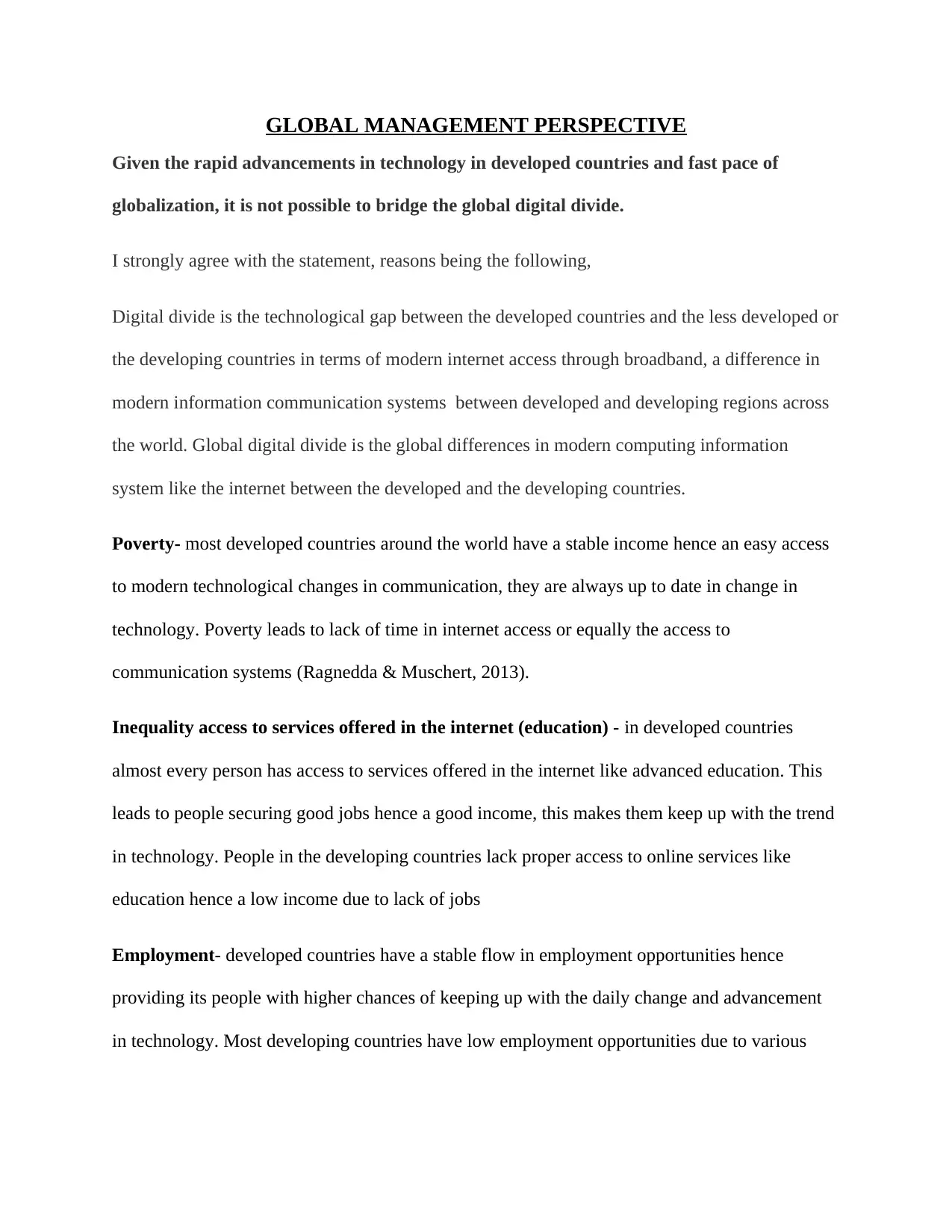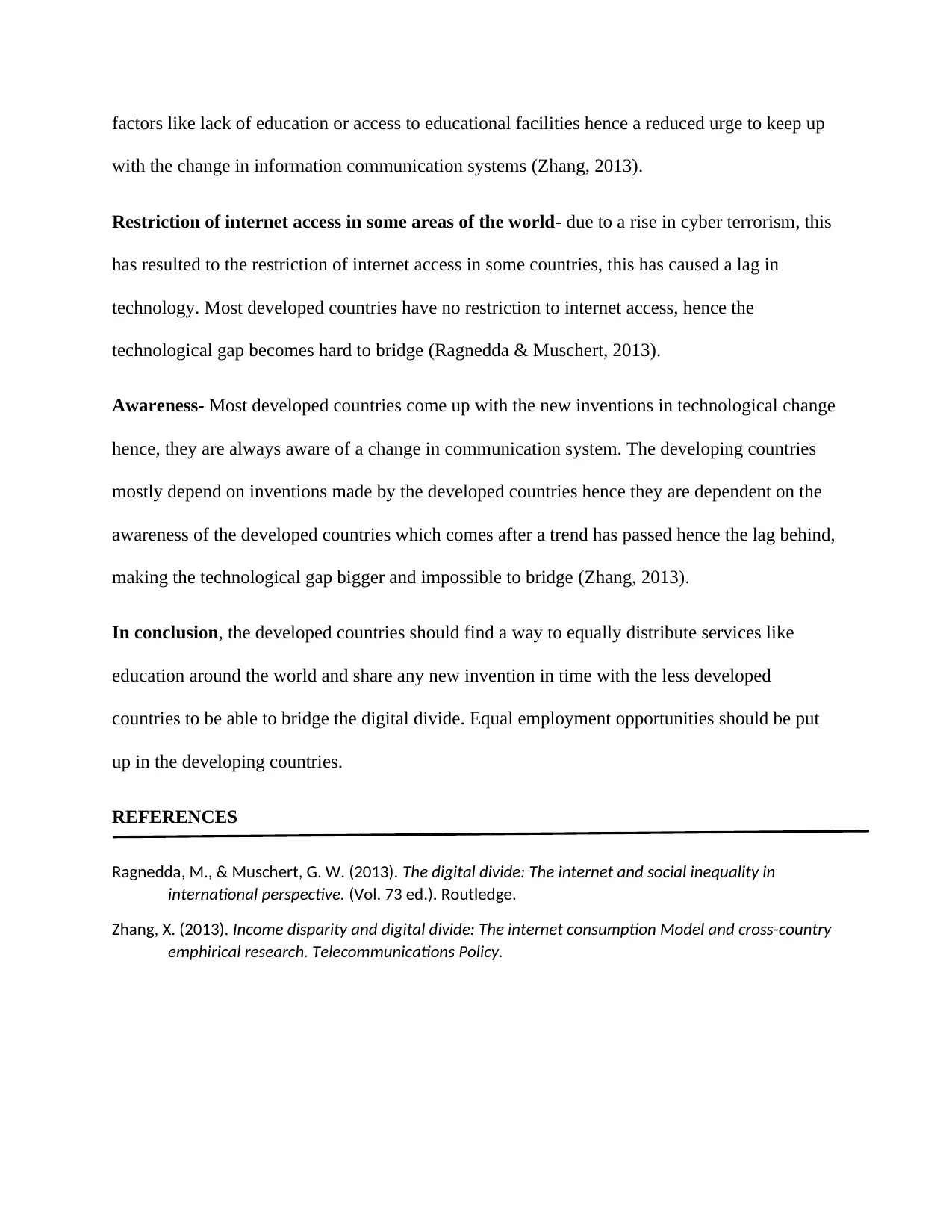Global Digital Divide: Analyzing Perspectives and Challenges
VerifiedAdded on 2020/05/28
|2
|563
|120
Report
AI Summary
This report provides an analysis of the global digital divide, focusing on the widening gap between developed and developing countries in terms of technology access and information communication systems. It argues that the digital divide is difficult to bridge, highlighting key factors such as poverty, unequal access to services like education, employment opportunities, and restrictions on internet access. The report examines how these factors contribute to the technological lag experienced by developing countries, leading to a significant disparity in awareness and adoption of new technologies. The conclusion emphasizes the need for developed countries to promote equal distribution of education and share technological advancements with less developed countries to help bridge the divide and to increase equal employment opportunities in developing countries.
1 out of 2








![[object Object]](/_next/static/media/star-bottom.7253800d.svg)